Behind the Scenes on the Sustainable Development Goals
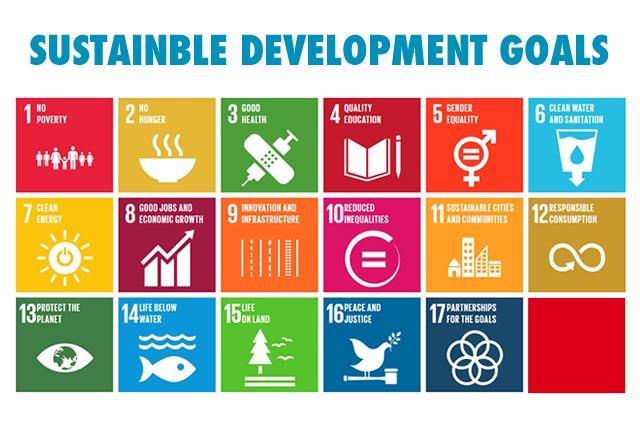

This weekend world leaders met at the United Nations in New York City to define a sustainable development agenda through 2030, a process built on the successes, failures and lessons learned from the Millennium Development Goals (MDGs) launched in 2000 and expiring at the end of this year. The new Sustainable Development Goals (SDGs) serve as a global framework of 17 goals designed to address humanity's most pressing problems, from poverty and hunger to health, education, gender equality, energy, climate change and environmental sustainability.
Earlier this month, TriplePundit spoke with Amina J Mohammed, the UN Secretary-General’s Special Advisor on Post-2015 Development Planning, about the process of defining these goals and turning words into action.
The premise is simple: what kind of world do we want? Considering the seven billion people other people in the world and this simple premise turns into a thorny nest of complexity. But we can agree on what kind of world leads to basic human dignity and a healthy environment. Without a set of goals mutually agreed upon that describe a world where we can all live and thrive, we hobble our efforts in ever achieving it.
The aspirations of a new century
At the Rio+20 UN summit on sustainable development in 2010 member states drafted the Future We Want Outcome Document setting in motion the process for post-2015 sustainable development, building on the MDGs and extending back to the 1972 Stockholm Conference on the Human Environment.
“Quite clearly we never would have embarked on this process if we hadn’t had some success from the first goal-setting that we did in 2000,” says Ms. Mohammed. “I think what we’ve learned from that is 193 countries could come together and agree in principle on a set of goals that would move forward on things that really were important to people.”
At the turn of the century efforts on issues like poverty, education, water and sanitation, gender equality, building partnerships were scattered, lacking focus and a clear means of implementation, explains Ms. Mohammed. “We didn’t see much over the past decades of the different UN platforms"
The Millennium Development Goals were a "brave attempt to try to be much more hopeful and fulfill people's aspirations," says Ms. Mohammed. "A review and prescription of what we ought to do in the next 15 years to bring everyone together and get some movement."
"Some things that happened on the MDGs we take stock of. Things that didn't happen, the unfinished business of the MDGs you see in the first six SDGs," Ms. Mohammed says. "So we don't leave anyone or anything behind. We take it forward and we face the more complex and difficult challenges that are emerging today."
Beyond a band-aid, the big picture of sustainable development
Sustenance is the foundation of sustainability. As long as people are hopelessly bound to hunger and poverty, global sustainable development remains out of reach. As with the MDGs, goal number one for post-2015 development is "ending poverty in all its forms everywhere." Easier said than done, but by meeting the goal of cutting extreme poverty in half, the MDGs proved the concept. Poverty can be significantly reduced.
"We set out a goal that would reduce poverty by half," Ms. Mohammed says, "and we got that as a global goal. That's a lot of people taken out of poverty." But, as critics are quick to point out, it leaves much work left to do. "I'd say the glass is half full in terms of what we achieved in the reduction of poverty. That did happen, largely because of China,"
The demographics and definition of poverty have much to do with getting the glass half full. The lesson is that poverty relief is not spread evenly and must start from the bottom up by defining extreme poverty as surviving on the equivalent of no more than $1 per day.
"We do know that the underlying causes of many more remaining remaining in poverty is the inequalities," says Ms. Mohammed. "...within countries, across countries, it really is a big issue. You have a whole goal to represent that in the SDG."
So it is with other MDG goals like education. "We got kids into classrooms but we question the quality," says Ms. Mohammed. By accepting responsibility for both the success and shortfall of the goal, the new goal encompasses and expands the original development goals of of the MDGs.
As Peter Hazlewood writes in the World Resources Institute blog, "...despite some impressive areas of progress along the way, nearly a quarter of humanity continues to live on less than $2 per day, inequalities have worsened dramatically, and unsustainable resource use, environmental degradation and climate change march steadily on."
Reviewing progress at the Rio+20 summit in 2012 was critical to the process of building on the MDGs and forging an iterative path forward. "Member states agree that we need to change the paradigm because we need to do development beyond just a band-aid," Ms. Mohammed says. "We want to look at new courses, we want to integrate a social economic and environmental perspective so that we will get sustainability."
"One of the first things we sat down to do was to be very clear on what was the state of the world," says Ms. Mohammed. "What is the fabric that we want to stitch on the remedies in the shape of goals. I think having an agreement of what existing challenges there are and what are the emerging ones. Conceptually, the sustainable development discourse came of its time in 2012 and that's because we've been discussing it for over two decades. This is where it comes to fruition.
The two main takeaways for member states from Rio+20 are the need for an integration and ownership of efforts and goals, built on a common, shared belief that partnership and trust will lead to a better world.
Universal, transparent
The new SDG framework is built on transparency and universality. All sectors of society must be involved in the process of sustainable development, including institutions, government, the private sector and civil society. Beyond this integrated approach is transparency. "It's something that really hasn't happened before," Ms. Mohammed says.
Adoption of the SDGs marks the culmination of two years of negotiations involving 193 member states and, perhaps more importantly, an exceptional degree of public participation from civil society, the private sector and all stakeholders.
"Two-and-a-half years is a long time to address a single issues and keep the momentum going," says Ms. Mohammed, but the result is widespread ownership from all sectors in laying the shared groundwork for the success of the SDGs.
Achieving sustainable development is simply not possible without inclusion, transparency and partnership.
The role of business
"Business has a role to play in every one of the goals we set," Ms. Mohammed says. "Any agenda that looks to have transformation in their economy that needs to be inclusive, business will be an integral part in the way their core business model is taken to task. That they are much more aware of how their business must not be detrimental to people and certainly not the environment."
"There's no cookie cutter for this," she says, but one essential element Ms. Mohammed mentions for inclusive business is through the financial sector allowing more avenues for women and young people to access credit for entrepreneurship. All have a role to play in this regard, from community and national banks to multinational and development banks.
"I think we're going to take a two year transition where we reflect on how best to partner with business. The issues that business needs to address as they become fit for purpose on the sustainable development agenda.
No peace without development, no development without peace
The new development agenda succeeds, says Ms. Mohammed, to the degree that development, human rights and peace are understood as three pillars of human progress.
"I think it's a difficult discussion to have because the mandates are so clearly delineated," says Ms. Mohammed. Over the years we've managed to speak to them in silos. The fact that we're talking about an integration of issues brings us to how the three pillars themselves are inextricably linked."
"We're cognizant of the fact that the UN itself is held up by two other pillars. The human rights pillar and the peace and security pillar," she explains.
The human and financial resources are available to move toward a shared vision of peace, equality, human rights and sustainable development, Ms. Mohammed says. She does not imply the task will be easy, nor that there are flaws, suspicion and doubt remaining in the process. We're only human.
But the process of the past two years, the past two decades and indeed back half a century and more of building the world we want takes a big step forward with the Sustainable Development Goals. We each have a part to play in seeing these ambitious goals come to fruition.
The Sustainable Development Goals Need a Can-Do Attitude
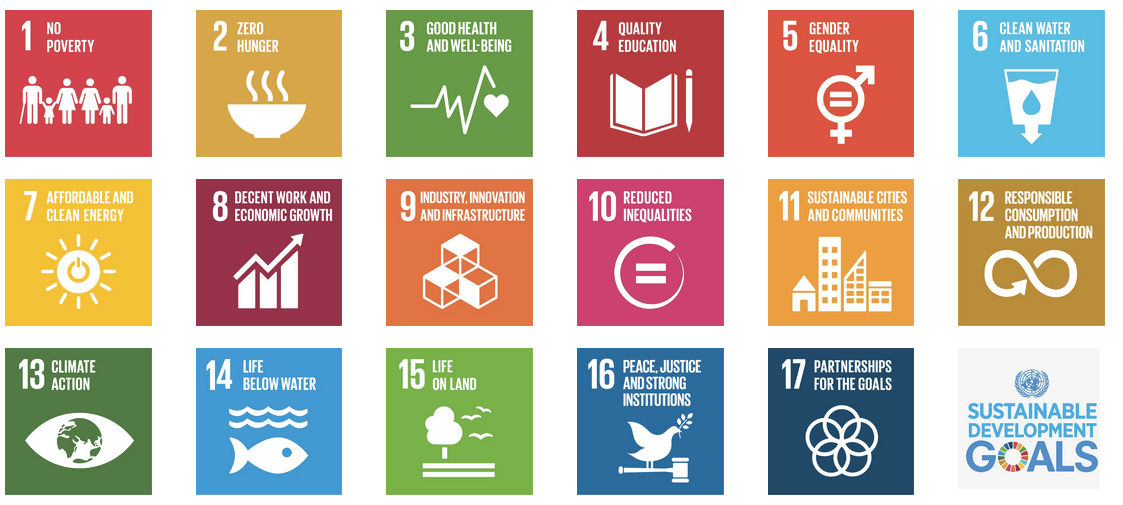

By Teresa Fogelberg Global Reporting Initiative
The new UN Sustainable Development Goals are here and I’ve got a message for all the people who say they can’t be achieved. It’s time to renew your faith in humanity and help us get on with the tasks at hand.
You see, I still believe that we are capable of doing great things.
What are the SDGs?
The Sustainable Development Goals (SDGs), agreed upon by all 193 UN member states, set the global development agenda from now until 2030. The 17 goals and 169 specific targets cover the most pressing challenges facing all people, the private sector and the planet, including poverty, gender inequality, clean energy, sustainable production and climate change. The goals are lofty and laudable. There can be no doubt that if we achieve them, the world will be a much better place for everyone to live.
“The Stupid Development Goals”
Long before they had even been agreed upon, the skeptics and the critics were already arguing that the SDGs would be dead on arrival. Earlier this year, a popular economics magazine called them the Stupid Development Goals. And just last week, a post here on Triple Pundit posits the question “Are the UN Sustainable Development Goals Doomed?” and then proceeds to lay out a number of cynical arguments for why the question is answerable only in the affirmative.
Some of the critiques lobbed against the SDGs are legitimate and we shouldn’t assume that now that the goals have been agreed upon the work ends there. The success of the SDGs relies heavily on action and collaboration by all actors: business, governments, civil society organizations and citizens. But this fact doesn’t mean that every objection to the SDGs is valid. Nor does it mean that we should throw our hands up and say that nothing can be done to improve the lives of millions of people across our planet.
Here are two of the most common indictments against the SDGs and why I think they miss the mark.
The goals are wildly unrealistic
Perhaps the most prevalent charge hurled by detractors is the claim that the SDGs are grandiose and wildly unrealistic. Already at goal one, which calls for an end to poverty in all forms everywhere, the skeptics roll their eyes and declare that the goals are far too ambitious and are therefore unobtainable. These same people gripe that gender inequality is an intractable problem and that switching to cleaner sources of energy will leave the global economy hamstrung. And some of these same nay-sayers complain that nothing can be done to address climate change.
How do I respond to these challenges? I ask the critics questions like the following:
- Do we believe that a person born in poverty should have to live that way for the rest of his life?
- Do we accept that women can be denied equal access to education and economic opportunity?
- Are we really incapable of developing cleaner sources of energy or teaching ourselves to produce goods without destroying the environment?
- Have we abandoned the ingenuity and creativity that’s always been the hallmark of mankind?
- Is there a point to having global development goals if they aren’t ambitious?
I submit to you that the answer to these questions must be a resounding no. The alternative is accepting the notion that the world we currently live in is as good as it gets. That’s not something I’m willing to do.
Business will never buy into the SDGs
There’s another group of critics out there who say the SDGs can never be achieved because business can’t or won’t work towards the goals in good faith. Some say doing so would be too costly. Others claim that the private sector cannot translate this type of soaring, aspirational rhetoric into practical action. Still others have erroneously claimed that the SDGs do not take corporations into account and therefore nothing will change.
Now this last accusation is false. The private sector has been involved in the creation of the SDGs from the beginning and the goals recognize the important role that businesses must play in order to achieve them. Additionally, SDG target 12.6 asks all UN member states to develop policy to encourage companies to make sustainability reporting part of their reporting cycles, an explicit acknowledgement that corporations must play a role. In this respect the SDGs leap forward from the Millennium Development Goals, which they now replace.
That having been said, I can’t deny the truth of the claim that businesses can find it challenging to convert international principles into practical action. Enabling business action on the SDGs is exactly what we plan to do at GRI.
To help, we’ve co-created the SDG Compass with the UN Global Compact and the World Business Council for Sustainable Development. The SDG Compass is a guide that businesses can use to align their strategies with the relevant SDGs and measure and manage their impacts.
Also, working in collaboration with Tata Consultancy Services, we just upgraded our Sustainability Disclosure Database, which now houses the UN Sustainable Development Goal Target 12.6 – Live Tracker. In order for governments to develop initiatives to increase sustainability reporting, they first need to understand the current state of play within their respective jurisdictions. The SDG Target 12.6 - Live Tracker will provide an overview of sustainability policies and reporting practices by companies around the world. This will enable smart policy and drive the innovation needed to achieve the SDGs.
Sitting here now, I can’t say for sure whether, 15 years from now, the new UN Sustainable Development Goals will be achieved or not. But I do know that we ignore these urgent issues at our own peril and I am hopeful that mankind is industrious enough find solutions.
Teresa Fogelberg is GRI’s Deputy Chief Executive and heads the Government Relations, International Organizations, Development and Advocacy Team, which works to enable smart policy on sustainability around the world.
ConBody: Sick Workouts with a Side of Social Justice


While it can seem difficult to have sympathy for a drug dealer, it's important to remember that, for young people in many parts of the U.S., dealing drugs is almost a survival crime. With underfunded, overburdened school systems and few opportunities in sight, it can be difficult for young men and women in inner-city America to resist the lure of the corner dealer's flashy wealth and his promises for a life beyond abject poverty.
Coss Marte, founder of New York City startup ConBody, knows this situation all too well. Growing up as a first-generation American on the Lower East Side of Manhattan, he was exposed to drug use at a young age. He and five others shared a small apartment, barely scraping by, but he dreamt of breaking out of poverty. When people asked what he wanted to be when he grew up, he replied that he wanted to be rich, and he idolized the only wealthy folks he knew -- the neighborhood dealers with the "freshest clothes and the biggest chains."
He began selling marijuana at 13 and eventually became the leader of a cocaine-distribution ring in New York. Before the age of 20, he was earning $2 million a year. But that all changed when he turned 23. After being in and out of prison from adolescence into young adulthood, Marte was busted for the last time and sentenced to a total of five years.
When he entered prison, he described himself as being "incredibly overweight" and "plagued with high blood pressure and high cholesterol." A doctor told him he could die in prison because of his health issues.
"That sparked something in me; I started working out in my cell, using exercises I learned from ex-Marines, correctional officers and fellow inmates," Marte wrote on the startup's Kickstarter page. "From then on I knew that my purpose was to give back instead of destroying individuals around me."
After losing 70 pounds in six months, he shared his workout routines with other inmates and helped 20 to collectively lose over 1,000 pounds.
The ConBody way
"The day I came home [from prison], I started doing bootcamps in the park, even though I was the only one doing them," Marte told me last week.
We met on a sunny Thursday afternoon in the Lower East Side, a few blocks from his childhood home and down the street from the corners where he used to sling drugs. "I was always looking for the next sale," Marte said of his past. "I wouldn't sleep for three days because I was afraid I'd miss something on the street." But now his old neighborhood is home to a new business venture, and a new lease on life for himself and others in similar situations.
Marte's vision was simple: lead prison-themed workouts to help people get in shape, while changing their perceptions of formerly incarcerated people. As he kept up with his solo bootcamps in the park, he started spreading the word around the neighborhood about ConBody.
"At first it was a little embarrassing," he said. "I was known as a person with a lot of money. Now, I was going up to people and pitching them my idea. A lot of them told me it would never work ... but I took the risk.
"When those first five people showed up for a workout, I had goosebumps," he continued, "because it was really happening."
Marte has since expanded ConBody and hired five full-time trainers, all of them formerly incarcerated, who he pays better than other gyms in the city. The company serves 25 monthly members, along with nearly 4,000 customers who attend drop-in classes. When he's not teaching classes at ConBody's studio, Marte leads private workouts at corporate headquarters for companies like Google and Selfie Stick.
As Marte -- now enviably in-shape, with kind eyes and a friendly smile -- stood in front of the company's office space, I asked him how it felt to own a business in his old neighborhood.
"It feels good," he answered unassumingly. "It's inspiring to see the support that people have given me, even people who are still on the corners. They'll say, 'You're doing it. I don't know how, but you're doing it.'"
Despite his success, Marte says he's far from finished: "I feel like I haven't accomplished enough yet," he told me, an excited twinkle in his eye. "There's still more to come. I feel like I was given this opportunity for a reason, to do something bigger than myself."
Why ConBody?
Prison reform is something the United States desperately needs. With only 5 percent of the world's population, the U.S. houses over 25 percent of the world's prisoners. As of Dec. 31, 2014, more than 1.5 million men and women sat behind bars in federal, state and county prisons, according to the Bureau of Justice Statistics. To put that in perspective: 1 in 99 American adults are now living behind bars. One in 31 adults are under some form of correctional control, including prison, jail, parole and probation populations, according to the American Civil Liberties Union.
The U.S. prison population has ballooned by 700 percent since 1970, thanks mostly to the advent of the so-called "War on Drugs." Despite the fact that data increasingly shows the War on Drugs isn't working -- the U.S. spent $1.5 trillion on drug control between 1970 and 2010, while drug addiction rates remained more or less unchanged -- men and women continue to be arrested, prosecuted and thrown in jail for nonviolent, drug-related crimes. Those who find themselves in this situation are disproportionately people of color hailing from low-income neighborhoods.
Here is where many in the U.S. will revert to a simple edict: Don't want the time, don't do the crime. And while it's certainly true that the best way to stay out of prison is to avoid breaking the law (although if anyone can say they've never done so, I'd like to hear from you), this age-old mantra neglects a crucial factor: Even after someone has served his or her time for the crime committed, their 'sentence' often continues long after they leave their cells.
For starters, it can be next to impossible to obtain employment upon release. With the sluggish recovery of the American economy and millions of non-offenders out there looking for work, it's getting even tougher for former inmates to make ends meet on the outside. In their personal lives, these men and women are often ostracized -- viewed as dangerous nuisances, lying in wait to hurt or steal from the 'innocent civilians' around them.
As Marte puts it: When ex-cons leave prison, "that's when the sentence really begins."
These factors combine to result in staggering recidivism rates and countless lives that are forever changed by teenage drug busts, petty theft and other nonviolent crimes.
Taking it to the next level
It's a constant effort to change how people view formerly incarcerated people, Marte says, and at times he still faces discrimination and ridicule from people who signed up for his classes without knowing about the prison connection.
Recently, he reached out to give a woman a high-five after a long workout, and she snapped back that she didn't want him to touch her. "I made a joke about it, but it hurt," he told me.
Along with the day-to-day fulfillment of giving people jobs, the broader vision of changing public perception around former inmates is what makes Marte strive to keep going. After almost two years of operating ConBody out of rented studio spaces, the team is looking forward to bigger and better things -- namely a new space in the Lower East Side with plenty of room for both workouts and community gatherings.
Marte also hopes to hire a new female trainer and expand ConBody's services to include tech education for his trainers. "When I went into prison, I was still using a flip phone," he remembered. "When I got out, it was all touchscreens. It can be discouraging. People start to think, 'I can't catch up. I'm just a statistic, and I'm going to stay a statistic.' And I want to change that."
To make the expansion happen, ConBody launched a Kickstarter campaign earlier this month. Our editor-in-chief, Jen Boynton, spotted the campaign online and made a contribution. She shared it with me, and I did the same.
I rarely ever back anything on Kickstarter. The infamous potato salad campaign pushed me over the edge when it came to my opinion about how ridiculous the platform has become. But the ConBody message really resonated with me. If you feel the same way, you can contribute to the campaign here.
"This is a place to smash stereotypes," Marte said of ConBody, "and make young professionals see formerly incarcerated people in a different way -- like we're human."
You can score a ton of rad perks by contributing to ConBody's Kickstarter. But I opted for what seemed like the most fun: to have ConBody trainer Sultan Malik bench press me on my visit to New York City. Despite my lack of side-plank skills, I like to think the whole thing was a smashing success. Check it out below:
https://youtu.be/OcMF_EeHZHo
The Fight to Keep Fresh Foods Out of Impoverished Schools


As childhood obesity rates soar in the United States, the issue has been under considerable scrutiny. There are several forces at play, especially in low-income neighborhoods. Fresh fruits and vegetables are often more expensive than their frozen, canned or dried counterparts. In addition, many minority and low-income neighborhoods are food deserts, lacking grocery stores and farmers' markets. As a result, residents shop primarily in convenience stores, where shelves are stocked largely with processed foods.
This creates a food culture that is inherited by children, favoring highly processed foods, loaded with fat, sugars, and synthetic additives. Due to these factors, children living in food deserts typically have little access to fresh fruits and vegetables, and are more likely to be obese.
Some schools in impoverished neighborhoods have been shifting this trend, thanks to the federal Fresh Fruit and Vegetable Program. Now, 7,500 of the lowest-income schools across the country are serving small cups of fresh blueberries, kiwi, and beets. The goal is to create a healthy life-long habit for children to eat a variety of fresh produce. Many of these children wouldn't otherwise have access to these fresh foods.
What is not to love about this program? Sadly, the preserved-food industry lobbyists with a financial interest in kids eating their foods is pouring money into campaigns to feed children other less fresh foods.
“We’re losing an opportunity to educate youngsters about fruit and vegetable consumption in all forms,” said Joe Clayton, a spokesman for the American Frozen Food Institute, an organization that promotes its own interests.
A war is now raging in Washington involving the federal snack program, and its $177 million budget. The program requires serving fresh fruits and vegetables, as written by Senator Tom Harkin of Iowa, a big fresh foods defender. Now that Harkin is retiring, the preserved-food lobby is likely to win out. The fate of the Fresh Fruit and Vegetable Program may be similar, also due to pressure from food lobbyists.
The preserved-food lobbyists don't want to lose out on revenue from these future grocery shoppers with food programs that can help shape the eating habits of these children into adulthood. Clayton fails mention the fact school lunches programs already serve frozen and canned vegetables, getting a slice of the $16 billion the government spends on school lunches. Meanwhile, fresh foods are largely underrepresented in school lunch programs.
A bill was recently introduced to expand the Fresh Fruit and Vegetable Program to include canned, frozen, dried and pureed fruits and vegetables. If successful, the program's original intent would be lost.
Corporate interests have a history of undermining programs created to promote child nutrition and health. Do you remember the ketchup is a vegetable controversy during the Reagan administration? Proposals sought to loosen the standards of what foods or condiments were counted by the United States Department of Agriculture (USDA) Food and Nutrition Service (FNS) as vegetables after subsidy cuts. As a result, the program became more "flexible" in planning meals for school lunches, with a modest amount of relish counting as a vegetable.
Meanwhile, Michelle Obama has been working to shift the American food culture and has even managed to have a video clip of her speaking about turnips to go viral. Although there is a healthy food movement underway, a powerful process-food lobby has been working against school programs serving up a helping of fresh fruits and vegetables.
Image credit: Flickr/U.S. Department of Agriculture
McDonald’s Serves Up Its First 100% Organic Hamburger


It has been a rough few years for traditional fast food companies, especially McDonald’s. Customers, especially the millennial crowd, now increasingly prefer fast-casual eateries where they can customize their orders and trust the ingredients (Chipotle) . . . or frequent a business where a commitment to the community and values makes people feel as if their money is well spent (Panera Bread). McDonald’s recent struggles have not helped the company’s cause, either. Tainted meat in China and contaminated food in Japan are just a couple of the triggers that led to the company’s declining sales overseas, where the world’s largest fast food chain had long depended on steady growth.
As a result, McDonald’s is closing as many as 700 outlets this year and has been scrambling, literally and figuratively, to find its way. From rolling out all-day breakfast menus at its locations in the U.S. to hiring a new corporate strategist and a former Obama administration press secretary, the fast food outlet is trying to shake up a company culture that cannot keep up with changing consumer habits. Even within the hamburger space, McDonald’s is losing ground with upstarts such as Five Guys and Shake Shack now serving up burgers that diners see as way more imaginative and have a far higher quality than that of the Golden Arches.
So does McDonald’s dig in its heels and continue to serve uniformly tasting cholesterol-laden fare or try to keep up with the Panera Breads and Chipotles of the world? After mocking kale earlier this year, the company is now testing it--as in the kale and quinoa salad I had at the Bahrain airport a couple weeks ago. But never mind salads or apple wedges in Happy Meals. McDonald’s is upping the ante by taking a second look at the sandwich that launched the company’s business 75 years ago.
The “McB,” McDonald’s first 100% organic beef burger, is coming to a store near you--if you happen to be in Germany and Austria this fall.
This new menu item is hardly the hamburger for which McDonald’s has become famous, or to its critics, infamous. Instead of looking more like a doorstop or paperweight, the burger looks reasonably authentic. The irregular-shaped meat patty will be served on dark bread, along with curly pale green lollo bionda lettuce, red onions, tomatoes, Edam cheese and a choice of sauces. After October 26, another version of the McB will be served on a sunflower seed bun with arugula. This is quite a change from the day when customization at McDonald’s involved “hold the pickles.”
McDonald’s is taking the McB seriously. The company claims this burger has been vetted by several boards tasked with organic certification, and that suppliers and franchisees have been trained about organics. Furthermore, the company appears to actually want feedback about this burger as it launched an online platform allowing customers to share their opinions on Twitter; provided, of course, they use the hashtag #McB. Even Munich’s landmark Allianz Arena was illuminated in the colors of the McB last week as part of McDonald’s public relations campaign for this reinvented hamburger.
The big question is whether this new menu item will resonate in central Europe or beyond. In fairness to McDonald’s, the company is in a pickle. A huge portion of its client base dismisses the likes of Whole Foods for what they see as more healthful, or “rabbit food,” while McD’s purpose is to serve that occasional greasy indulgence. Plus one complaint McDonald’s customers have had is its overwhelming and confusing menu--witness In-N-Out’s continued success out on the west coast, where the short list of burgers, fries and shakes, along with the “secret menu,” have together become a favorite. That simplicity is in contrast to McDonald’s, which seems passe, dull and static, yet is adding a new menu item once again. McDonald’s image, one that symbolizes corporate greed and Americanization (and for latter, never in a good way), also boxes in the company. Few of us can imagine McDonald’s doing anything other than serving McNuggets and Big Macs. It may take years for the Golden Arches to transform itself and rise again, but by then, it could be too late.
Image credit: McDonald’s Germany
Closed Loop Fund Reveals First Recycling Investments, But Will There Be Impact?
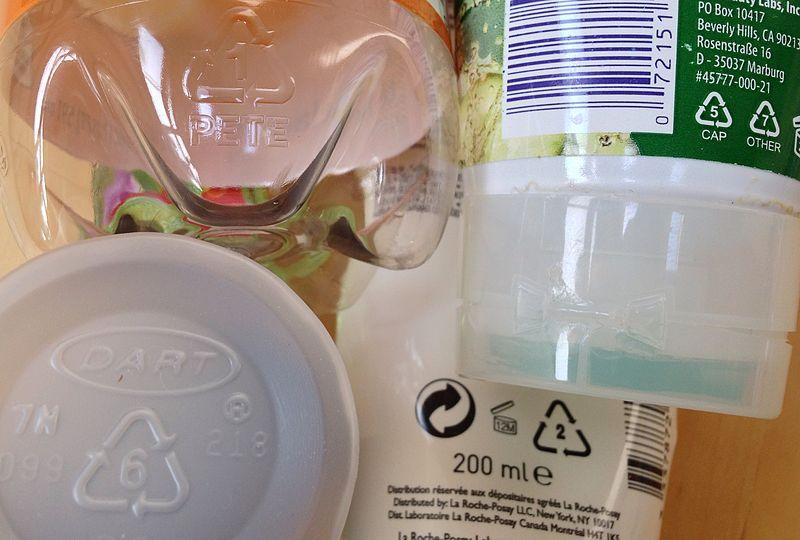

The Closed Loop Fund launched last year and has added a bevy of marquee companies as partners, including Unilever, P&G, Walmart, Coca-Cola and PepsiCo. Described by its backers as a “social impact fund” that will invest at least $100 million in municipal recycling projects, Closed Loop Fund touts several ambitious goals for the upcoming decade: the elimination of 50 million tons of greenhouse gasses, the diversion of 20 million tons of garbage from landfills and the creation of 20,000 jobs across the United States.
To that end, in a press release widely disseminated to news sites and blogs, the Fund announced the first three investments that it claims will increase recycling rates and reduce the annual $5 billion that cash-strapped cities and counties currently spend on trash collection and landfills.
One project in Baltimore, according to Closed Loop Fund, will offer a “game-changing” system for plastic recycling by ramping up the collection of those pesky #3 and #7 plastics that most municipalities are not able to gather and recycle. Funded by Company QRS and Canuna-Hershman, the new facility could process up to 4,500 tons of these plastics monthly. As far as scalability goes, the Baltimore recycling plant certainly sounds impressive, as it will recycle plastic waste from an area stretching from Maine down to South Carolina.
The two additional projects are in the Midwest. Projects in Quad Cities, Iowa, and Portage County, Ohio, will allow both municipalities to change their recycling collection systems from dual stream to a more seamless single stream (or in industry speak, “co-mingling”) process.
“This new idea could change recycling forever,” says Fortune, which was enthusiastic over both the aforementioned plants’ recycling capabilities and the methods by which these facilities are financed. After all, recycling is akin to a hamster running in a wheel: retailers and consumer packaged goods manufacturers want more recycled material to boost their sustainability credentials while reducing the cost of procuring virgin raw materials, but many municipalities do not have the funding or infrastructure to increase their recycling rates. As a result, despite a generation of increasing consumer awareness, recycling overall moves in the same direction as that hamster: no where.
So the fact that these huge consumer goods companies--along with the world’s largest retailer that is also the biggest seller of their products--are willing to fund such projects reveals a bright future for recycling and waste reduction, right?
Not so fast, say several organizations skeptical of Closed Loop Fund’s intentions.
“The Closed Loop Fund continues the cynical tradition founded by the major soft drink companies that gave seed money to the Ontario Blue Box curbside recycling program in the 1980s: pay a few million dollars here and there to keep local governments distracted from the fact that they’re saving industry billions in waste recycling and disposal costs” - Guy Crittenden in Solid Waste Magazine
Written a year ago, Crittenden’s sentiment is shared by several environmental groups, such as UPSTREAM, an NGO that advocates for less plastic pollution, in addition to improved product design incorporating more sustainable and reused materials. The real solution, say these groups, is to expand extended producer responsibility (EPR) in the United States. EPR would put the onus of paying for recycling on manufacturers and retailers—but such an approach, commonplace in Europe, is a non-starter for these companies.
That $100 million also pales in comparison to what New York City alone annually spends on the collection on processing of packaging waste, which analysts say runs approximately $600 million annually. And before you add Walmart’s $485 billion in annual sales for FY2014, the combined revenues of Colgate-Palmolive, P&G, Unilever, PepsiCo, Coca-Cola (Company and Enterprises) tally at about $273 billion annually. That nine figures, while at first glance appear to be a hefty number, pales when one considers the size of these companies and the impact they have on waste streams nationwide. So while these manufacturers and Walmart are making a move considered unthinkable only a few years ago, many argue that more can be done. And considering the state of landfills in the U.S. overall, critics of the Closed Loop Fund and its backers have a point.
Image credit: Z22
BLOG - Easy transportation only way to sustain city well-being


Yesterday, Sunday 27 September was a good day to be in Paris, writes AkzoNobel's Johan Widheden, Sustainability Specialist.
Earmarked as La Journeé sans Voiture – literally, ‘the day without cars’ – city officials closed off a large portion of its downtown area to cars between 11am and 6pm in a bid to reduce local air pollution in the City of Love. The move follows emergency regulations that were enforced last summer to drive down “dangerously high” pollution caused by car fumes across the city.
Tackling the negative impact of local transport on the wellbeing of citizens is an issue not exclusive to the French capital. In Delhi, regulators have just announced plans to limit emissions from vehicles by cracking down on those that drive cars without the necessary pollution check certifications, and by investing heavily in gas-powered buses.
In fact, most of the world’s cities, large and small, are struggling to develop the right transport infrastructure that will keep its citizens moving while also maintaining a sustainable environment that fosters social cohesion, economic prospect and the well-being of its citizens.
City leaders the world over no doubt dream of car-free urban environments, filled with green space, cycling lanes, superb public transport systems that whizz people from A to B without fuss, and pedestrianized streets that make walking safe and easy. These are all the things we know to make cities great places to live, work and play, as evidenced by research conducted by the likes of Monocle and the Economist Intelligence Unit.
Some cities have been making progress for many years. In Copenhagen, a raft of urban planning laws have been redefining the city’s public space since the 1970s, promoting cycling over driving. The 180% sales tax placed on the purchase of new cars was a key part of this. As a result, car ownership is incredibly low and the city’s former car parks have been turned into parks and pedestrianized zones.
Other cities are trying to follow suit. In Tampere, Finland’s second city, government officials are ploughing ahead with plans to pedestrianize its main street, the Hämeenkatu, and cutting off the area to cars in preparation of a new tram system coming in 2018. Similarly, Sydney’s main shopping and business thoroughfare will soon be transformed by the construction of a 12 kilometre light railway system.
And plenty of others – from Mexico City and Bogota, to Hamburg and Shanghai – have explored and trialed strategies for encouraging people to get out of their cars and onto their bikes or public transport.
Of course, transforming cityscapes with sustainable transport modes is easier to action in some places than it is in others. The medieval layout of a city like London makes the implementation of cycling lanes a tough undertaking, for example. The embedded culture of people living in Los Angeles, who are so wedded to their cars, makes it really hard for policymakers to get public transport infrastructure projects off the ground. Having said that, the Mission Zero Corridor project in the American south – initiated by the carpet tile manufacturer Interface – should give some examples of what’s possible in creating a ‘zero-impact road’.
Strong leadership is so important in effecting change. Rather than thinking about short-term, quick-win projects – which rarely lead to the creation of the sustainable transport infrastructure that is required to make places better – our political leaders must find ways to use their influence and power to consider the long-term economic, environmental and social prosperity of their cities and those living, working and visiting them.
By investing in more sustainable modes of transport – which offer a more attractive, pleasant, easy, quick, safe and, not to mention, healthy way of moving around – cities can aid the culture change that’s needed. Strong leadership is also required from the business community. Through its Human Cities initiative, designed to help find ways of making our cities more inspiring, energizing and vibrant, AkzoNobel continues to play an important role in helping to reduce crime, boost safety, better the aesthetics and improve way-finding through innovative color and coatings that make transport systems safer, more sustainable and more pleasant places to travel in.
And new technology is starting to support this culture change too, making it pain-free to use public transport. Mobile apps like Uber have made it incredibly simple to ‘hail’ a taxi in hundreds of cities around the world. Others, such as Waze, use the power of data supplied by its community of users to give commuters real-time information on the best routes and modes of transport in getting from place to place.
By creating the right environment that incentivizes people to get out of their cars and cycle, walk, or jump on a bus or train, cities are able to truly foster and encourage people to interact with their fellow citizens, neighbours and the environment around them. Isn’t that the sort of city you would want to live in?
Urban Slum Education Concept Wins Million Dollar Hult Prize 2015
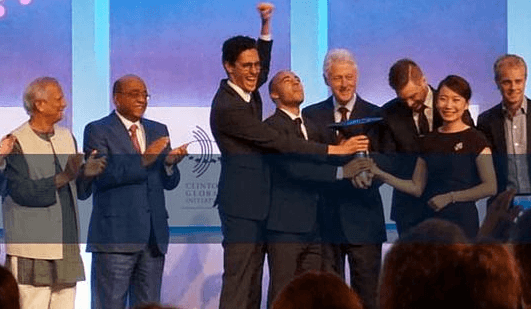

The room at tonight's Hult Prize ceremony was filled with luminaries in the fields of business, sustainability and politics. Nobel prize winners, prime ministers, and CEOs were a dime a dozen. But, at the end of the day, anything associated with the Clinton Global Initiative is about smart people who are trying to solve real problems. Tonight's winner? A group from National Chengchi University in Taipei called IMPCT.co whose PlayCares concept aims to revolutionize the way kids in urban slums receive care and education.
The problem:
Among myriad other concerns, early childhood education in slums is poor at best. Often it barely exists at all. Parents endure long commutes and seldom have a reliable, safe place for their children to stay while they try to make a living. The Impct.co group began looking at this problem with the assumption that any solution would have to be integral to the existing community, and indeed be run by the community if it was to be sustainable.
The solution:
The team developed PlayCares, a franchised daycare facility which can be owned and operated by a local entrepreneur - typically a woman with children. The facilities feature a classroom, a Montessori-style teaching system and enough support for about 20 families and their children. To fund the PlayCares, Impct is looking to individual investors - people like you and me - who will actually receive a small return in exchange for funding new PlayCares. It's what Impct refers to as a "purely positive investment cycle with our radical profit-sharing model."
The concept has already won the support of an initial Indiegogo campaign as well as that of a variety of NGO partners and will be well worth watching as a creative, and profitable solution to a whole set of very serious problems.
The Hult Prize is an annual million-dollar business plan competition among global universities that awards one start up idea per year on a specific topic of global social importance. In addition to a million dollars in seed capital, the winner receives mentorship and advice from the international business community.
Think you've got what it takes? Get a team together for next year!
Image c/o @hultprize twitter teamThe Triple Bottom Line Case for the U.N.’s New Sustainable Development Goals
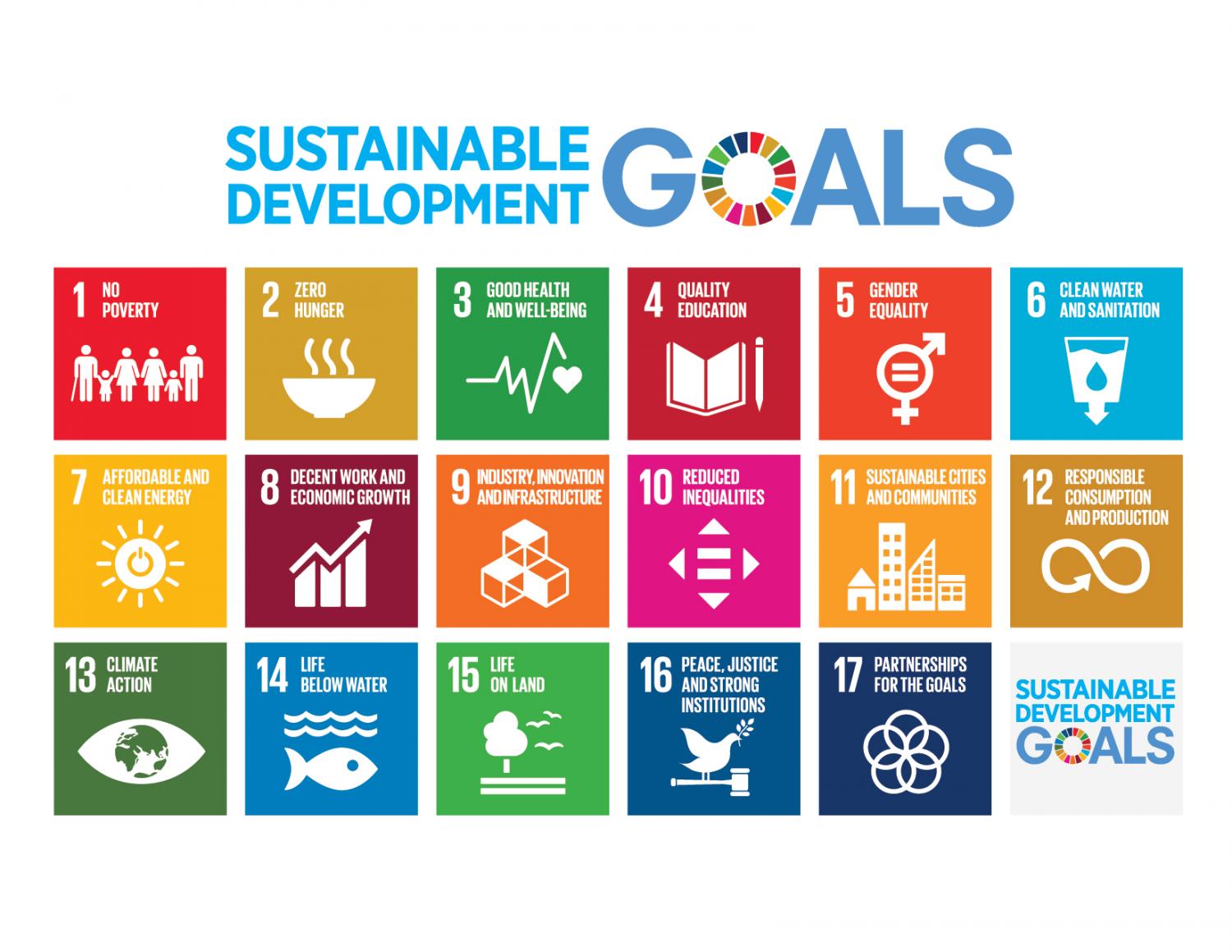
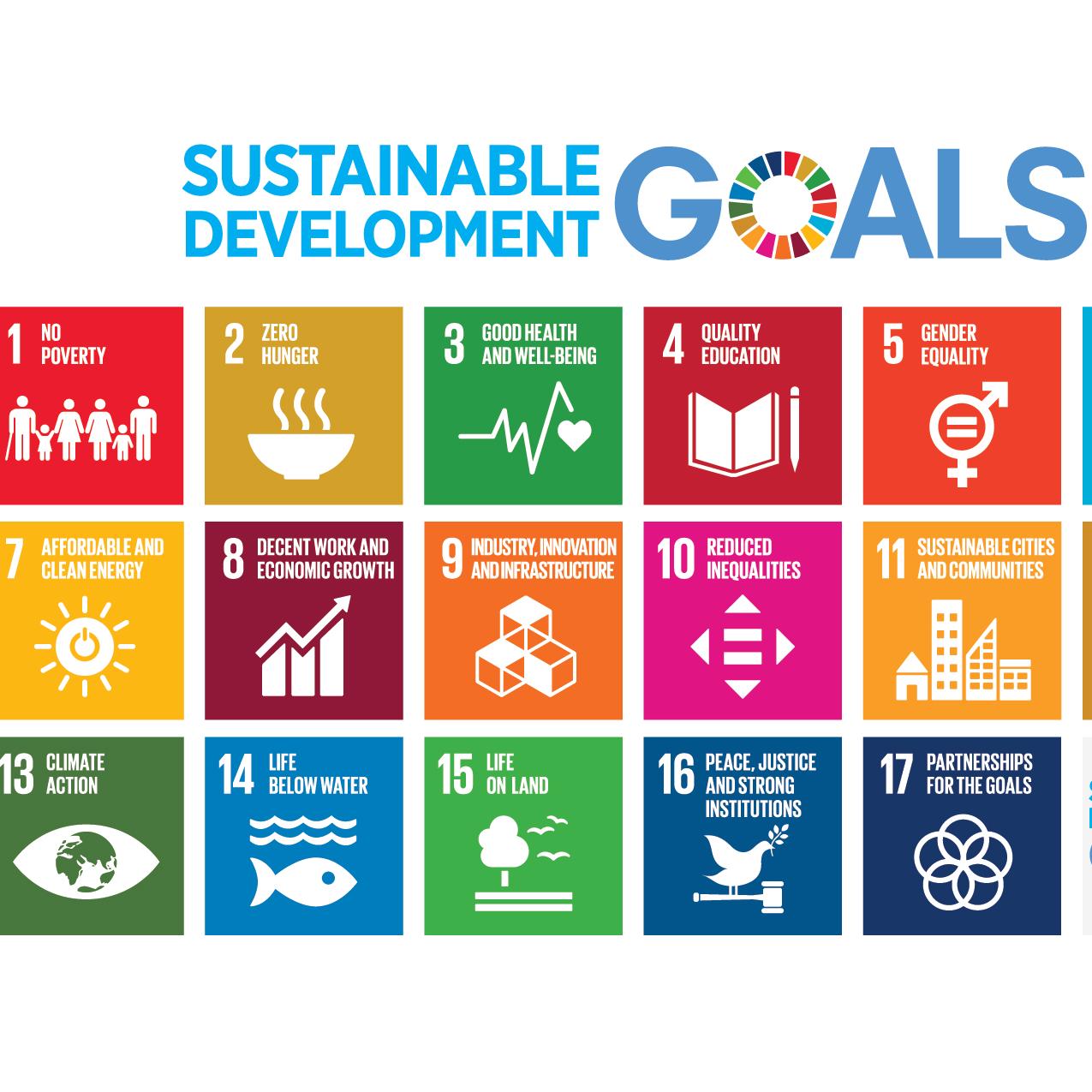
This weekend, United Nations member states will adopt a new set of Sustainable Development Goals (SDGs) at the three-day UN Sustainable Development Summit. The new goals replace the Millennium Development Goals (MDGs), which were adopted in 2000 and expire this year.
While the MDGs mainly dealt with health, education and poverty in the world’s poorest nations, the SDGs deal with those topics but add other issues environmental, gender inequality, and access to clean water. What about business and the SDGs? Is there a triple bottom line (3BL) case to be made for the SDGs? Let's take a closer look at each goal to find out.
The 17 Sustainable Development Goals and the triple bottom line
1. End poverty in all its forms everywhere.
There are startling facts about global extreme poverty rates. While it is has reduced by over half since 1990, one in five people in developing countries still live on less than $1.25 a day. Businesses can play a role in reducing extreme poverty rates by creating jobs and boosting the economy.
2. End hunger, achieve food security and improved nutrition and promote sustainable agriculture.
There are an estimated 795 million people hungry globally, that’s one in nine people. Most of the world’s hungry live in developing countries. A 2012 WorldWatch blog post chronicled five companies that are reducing hunger, including PepsiCo.
PepsiCo has been a partner of the UN World Food Program since 2008. In 2011, the company committed to developing market-based solutions to food and nutritional insecurity in Ethiopia. As part of this commitment, PepsiCo committed $3.5 million to WFP to develop a locally sourced, chickpea product geared for malnourished children.
PepsiCo also helps reduce hunger in the U.S. For that aim, it partners with Feed the Children. There are two recent examples of its partnership with the organization. The latest one occurred in Chicago where the company helped provide food to 800 families in need. In August, the company partnered with Feed the Children in Detroit to help provide food for 1,600 families in need.
3. Ensure healthy lives and promote well-being for all at all ages.
Many pharmaceutical companies are multi-national. Progress in areas like reducing tuberculosis, polio and HIV/AIDS is being made by companies in partnership with non-governmental organizations (NGOs). Take Gavi, an NGO with the goal of making vaccines more affordable for low-income countries through expanding suppliers to include developing country manufacturers.
4. Ensure inclusive and quality education for all and promote lifelong learning.
Education is the backbone of any society. Although progress has been made globally to increase access to education, 57 million children are still out of school. Many of those children may be future doctors, lawyers, scientists, and entrepreneurs.
5. Achieve gender equality and empower all women and girls.
The head of many households around the world are women. When businesses help girls and women have equal access to education, work and health care they not only create future customers but future entrepreneurs. In developing countries, there are an estimated eight to 10 million small and medium enterprises (SMEs) with at least one female owner, according to the World Bank.
6. Ensure access to water and sanitation for all.
Water is necessary to live, and it is a necessary part of many, if not most businesses. When it comes to providing access to clean drinking water in developing countries, one company readily comes to mind. That is Unilever.
Unilever uses its personal hygiene brands to increase access to clean drinking water, including Pureit which has provided clean drinking water to 55 million people. Pureit water filtration systems remove contaminants in drinking water. Since 80 percent of diseases in the developing world are water related, Pureit helps save lives. Pureit partners with PSI and a local microfinance institute to provide access to its purifiers in installment payments.
7. Ensure access to affordable, reliable, sustainable and modern energy for all.
Our current way of life depends on energy, and every business depends on energy to keep running. Consider the first thing you do when walking into any room: turn on the lights. Increasing the use of clean power to provide that electricity is good for the planet, its people and the bottom line.
8. Promote inclusive and sustainable economic growth, employment and decent work for all.
About half of the global population lives on the equivalent of about $2 a day, but for some people having a job doesn’t mean they escape poverty. The access to decent work that provides a sustainable living is a part of the 3BL, as people are the first part of that bottom line.
9. Build resilient infrastructure, promote sustainable industrialization and foster innovation.
Communities are the backbone of any country, and it is in communities where businesses thrive. The fact that about 2.6 billion people in the developing world still face problems in accessing full-time electricity is a problem that businesses can help solve. Businesses can also solve other problems, such as lack of access to basic sanitation or reliable phone services.
10. Reduce inequality within and among countries.
Although income inequality between countries has been reduced, income inequality, on average, increased by 11 percent in developing countries between 1990 and 2010. One way that can companies can reduce income inequality is to provide a living wage. A TriplePundit article last year listed 10 U.S. companies that pay above the minimum wage. At the top of the list is Costco, which starts employees start out at $11.50 an hour. Costco employees earn an average of $21 an hour.
11. Make cities inclusive, safe, resilient and sustainable.
It is within cities where the majority of the world’s businesses are located. And it is within cities that most of the world’s population lives. Half of the world’s 3.5 billion people live in cities. When cities thrive, so do communities.
12. Ensure sustainable consumption and production patterns.
One of the goals within this goal is reducing per capita food waste by half at the retail and consumer levels by 2030. A staggering amount of food is wasted globally. The cost of food waste is more than just financial, as General Mills points out. Food waste rotting in landfills creates methane, a greenhouse gas with a warming potential 21 times that of carbon dioxide.
General Mills works to ensure that the amount of food waste is less than two percent of its total product volume. It does so by making its food production more efficient and donating surplus food. In 2014, the company donated 12,600 metric tons of surplus food to charitable organizations in the U.S.
13. Take urgent action to combat climate change and its impacts.
The benefits of businesses tackling climate change far outweigh the costs. The economic costs of doing nothing, or what a Tufts University report describes as “business-as-usual conditions,” without new climate policies, will add up to $1.9 trillion, or 1.8 percent, of U.S. output per year by 2100 in four cost categories (increased hurricane damages, residential real estate losses due to sea level rise, increased energy costs, and water supply costs).
14. Conserve and sustainably use the oceans, seas and marine resources.
Oceans and seas are a vital part of our earth. Over three billion people on this planet rely on marine and coastal biodiversity to make a living. The global market value of marine and coastal resources and industries is an estimated $3 trillion a year, or about five percent of global GDP.
15. Sustainably manage forests, combat desertification, halt and reverse land degradation, halt biodiversity loss.
There is a business case to be made for protecting the world’s forests. About 1.6 billion people around the world depend on forests to make a living. Thirteen million hectares of forest are lost every year. That means many people lose their livelihood.
16. Promote just, peaceful and inclusive societies.
The lack of just, peaceful and inclusive societies costs money. Every year corruption, bribery, theft and tax evasion cost developing countries $1.26 trillion, according to the UN. That is money that could be used to help people that live on less than $2 a day. But is that part of the 3BL? Here’s another question. Shouldn’t businesses ensure that societies are just, peaceful and inclusive? Isn’t that good for their bottom lines, including the 3BL?
17. Revitalize the global partnership for sustainable development.
In order for these SDGs to be achieved, there need to be partnerships with governments, civil society and the private sector. In other words, businesses can partner with governments and civil society to ensure there is progress toward each goal.
Image credits: United Nations and SDG Watch Austria/Flickr
Why Businesses Should Care About Water Security


By John Davidson SABMiller plc
There was a time not long ago when the threats to business profitability and sustainability from water shortages were largely ignored by corporate investors. Companies like ours fully understood how essential water was to us and our future and the demands that put on how we operated and behaved. But in general there was little pressure from investors to act or to fund the inevitable short-term costs. For some businesses, this could be a brake on the changes needed.
These barriers are disappearing fast. Last month more than 60 leading institutional investors publicly called for companies to give a higher priority to good water management. This shows that there is now a widespread recognition of just what a risk this is to future profitability.
This weekend, the UN General Assembly will approve the Sustainable Development Goals intended to tackle the world’s big social and environmental challenges. Goal Six seeks to ensure availability and sustainable management of water and sanitation for all. With 70% of the world’s fresh water going into agricultural and other supply chains, business has a critical delivery role to play.
But tackling this problem effectively has to go well beyond simply reducing water use in operations. For long-term results, it must also involve businesses working with local communities, governments, and civil society to manage and conserve shared water resources.
This is an approach which SABMiller is already following – and for good reason. We pride ourselves on being the most local of the global brewers, sourcing our crops and brewing our beers as close as we can to the communities where they are consumed. This requires us to understand local water stresses and challenges.
Local water stress hurts us both directly and indirectly. Without access to water in the future, we won’t be able to produce our beers. Nor will farmers be able to grow the crops we need. But indirectly, water stress also holds back other local businesses and communities – and if they don’t prosper, there will inevitably be less demand for our products.
So the business case for us to care about water stress is strong. And this is true not just in agricultural areas but also in cities, which are growing in the developing world at the rate of five million people a month. Lack of access to clean water and poor sanitation is one of the major causes of poverty.
Helping to ease water stresses takes us into unfamiliar territory. It requires us to look outside our traditional core competences as brewers and work on finding long-term solutions for all water users that maintain the integrity of the natural systems. This requires cooperation with a whole range of other groups including national and local government, other businesses, campaigning groups and, of course, communities.
This must go beyond improving infrastructure, important as that is. As a joint report by SABMiller and WWF shows, water security also requires programs that strengthen the resilience of ecosystems and societies from the shocks and stresses resulting from climate and population shifts.
What does this mean in practice? Let me give three examples from three different continents. Our brewery near Bogota has faced rising water charges from the local utility company in recent years, due to treatment costs caused by increased sediment levels in the river. These were the result largely of the clearing of vegetation by farmers and cattle ranchers upstream.
The solution was to support The Nature Conservancy’s Water Fund – an innovative mechanism to support the rehabilitation of the watershed through investments in more sustainable farming practices and higher milk-yielding cattle. In return, farmers commit to long term conservation agreements.
The expected reduction in sediment should deliver savings of $4 million per year for the Bogota water utility and, of course, for its users. Water bills fall, farmers develop more efficient and sustainable practices, and natural resources and the community’s future are protected.
South Africa’s Strategic Water Partners’ Network is another example of a bold partnership which brings together government, companies, and civil society groups. Joined up policy interventions have led to improved water use in agriculture, better waste water management, and increased municipal and industrial water efficiency.
In India, SABMiller has partnered with a local agricultural institute to work with small-holder farmers and communities in the Telengana area. India, with 17 per cent of the world’s population and just 4 per cent of its fresh-water resources is in the front-line of the battle against water stress. This availability challenge is made worse by the inefficient use of water by agriculture, which in India accounts for 90 per cent of fresh water consumption compared to the 70 per cent global average.
Our initiative involves working across the board with communities to secure water resources. There is investment in infrastructure to harvest and retain better rainwater. Farmers are helped to increase yields – more crop per drop – through improved practices. Incomes are also being improved by supporting communities to develop new enterprises such as using spent malt from our local brewery to increase the milk yield of their cows. The ultimate aim is to create a model than improves water availability, water usage, and incomes in a way that can be scaled and replicated.
These partnerships illustrate an important change that has occurred since the Millennium Development Goals were agreed in 2000. Business is no longer an after-thought, perhaps to be approached for funding, but is now understood to be integral to development. There is a greater focus on how the right core business investment can have a multiplier effect across value chains and communities to drive important development outcomes than on the investment alone. Companies in turn have recognised that healthy successful businesses require healthy, successful communities.
As we move beyond the debate about the Sustainable Development Goals and into implementation, it is this new alignment of interest which offers the best hope for transformative change. We should welcome, rather than be suspicious of, the profit imperative being used to help solve some of society’s toughest challenges.
John Davidson is General Counsel and Corporate Affairs Director, SABMiller plc John joined the group as General Counsel and Group Company Secretary in 2006. In November 2014 he assumed responsibility for regulatory affairs, communications and sustainable development, and is now General Counsel and Corporate Affairs Director.